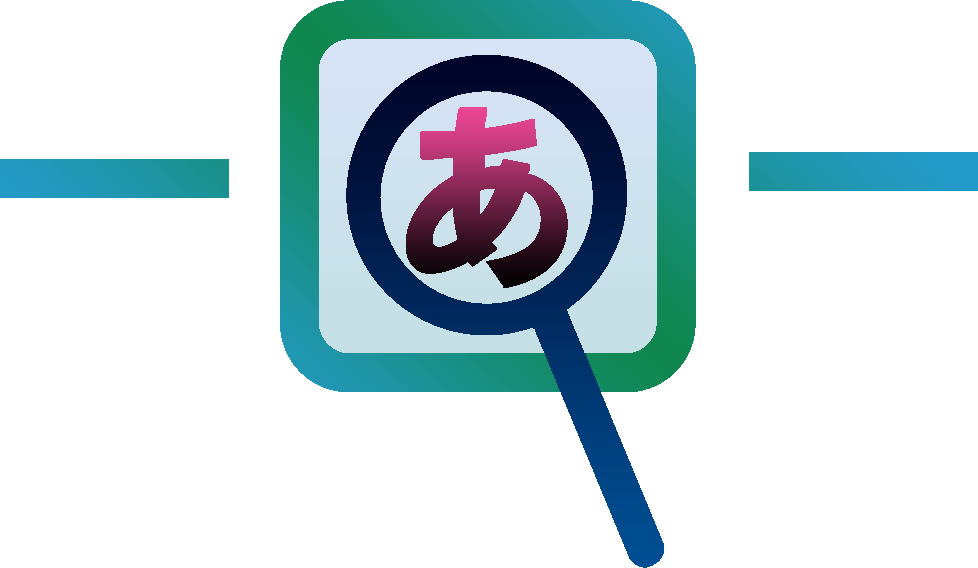部
Components
10105 results found using grammar には_では_とは
GRAMMAR MATCH
windowXPにはCDを
や
焼
くきのう
機能
があるそうですが、そのてじゅん
手順
をかいせつ
解説
しているページをおし
教
えてください。
I hear that you can burn CDs with Windows XP; could you tell me a website that explains the procedures involved?
「あ、は、はい・・・ごめん、
れい
玲
あね
姉
」「コラ。いく
幾
らしんせき
親戚
とはいえ、わたし
私
はせんぱい
先輩
いし
医師
よ?いんない
院内
ではちゃんとケジメをつけなさい」
"Ah, y-yes ... Sorry, Coz." "Hey! You might be my relative but here I'm your senior and a doctor. Keep things straight while you're in the hospital!"
ひとまえ
人前
ではな
話
すことにな
慣
れたので、めんせつ
面接
にはやくだ
役立
ったとおも
思
う。
I became accustomed to public speaking, so I think that's been useful when taking job interviews.
いんよう
引用
したもんだい
問題
ではありませんが、かんけい
関係
だいめいし
代名詞
とかんけい
関係
ふくし
副詞
のつか
使
いわ
分
けをと
問
うもんだい
問題
がリーディングセクションにはあります。
The problem quoted isn't one, but there are problems in the reading section that ask you to distinguish relative pronouns from relative adverbs.
どうし
動詞
helpはtoふていし
不定詞
・げんけい
原形
ふていし
不定詞
のりょうほう
両方
をとりますが、くだけたぶんたい
文体
ではげんけい
原形
ふていし
不定詞
がおお
多
いとされており、このれいぶん
例文
でもそれがつか
使
われています。
The verb 'help' takes to-infinitives and bare infinitives but bare infinitives are said to be the most common in casual text; as also used in this example sentence.
みらい
未来
しんこうがた
進行形
は、みらい
未来
のじてん
時点
でしんこうちゅう
進行中
のどうさ
動作
やできごと
出来事
をひょうげん
表現
するときにもち
用
いられますが、れいぶん
例文
はしんこうちゅう
進行中
のどうさ
動作
とはかんが
考
えられません。
The future progressive tense is used when expressing events and action in progress at some future point, however the example sentence cannot be understood in that way.
いっさんか
一酸化
たんそ
炭素
とはたんそ
炭素
かごうぶつ
化合物
のふかんぜん
不完全
ねんしょう
燃焼
ではっせい
発生
するゆうがい
有害
ぶっしつ
物質
です。
Carbon monoxide is a poisonous substance formed by the incomplete combustion of carbon compounds.
こうしき
公式
もんだいしゅう
問題集
には"う
受
けみ
身
のげんざい
現在
しんこう
進行
がた
形
"とせつめい
説明
されています。
In the official question collection it is explained as being "passive voice of the present continuous tense".
ふてい
不定
ことば
詞
のけいようしてき
形容詞的
ようほう
用法
には2しゅるい
種類
あり、①げんてい
限定
ようほう
用法
、②じょじゅつ
叙述
ようほう
用法
。②はもちろんしゅかく
主格
ほご
補語
です。
There are two ways of using the infinitive as an adjective, 1. attributive, 2. predicative. Naturally 2. is a subject complement.
あなたは
じゅうぶん
充分
かわい
可愛
いおんな
女
のこ
子
のはんちゅう
範疇
にはい
入
るとおも
思
います。ぶちょう
部長
のおめがねにはよゆう
余裕
でかなってしまうでしょう。
I think you fall well within 'cute girl'. You'd easily go and pass in his judgement.
それでは、みなさまも
よ
呼
んでくるようにい
言
いつかってありますのでごどうどう
同道
くださいませ。
In which case, I was also requested to invite all of you so if you would please accompany me...
1.5V
かんでんち
乾電池
をちょくせつ
直接
さわ
触
っただけではかんでんし
感電死
することはないでしょう。
You're not going to get electrocuted just by directly touching a 1.5V battery.
しゅうりょう
収量
がおお
多
いからといってとうと
尊
いとはおも
思
わないが、ドカンとはっせい
発生
していると、どく
毒
かね
菌
でもうれしいもんだ。
I don't think that they are valuable just because they have a large crop, but I'm glad when they sprout in great numbers - even when they are poison mushrooms.
どうし
動詞
にはもくてきご
目的語
をとらないじどうし
自動詞
と、もくてきご
目的語
をとるたどうし
他動詞
があります。
With verbs there are intransitive verbs that don't take an object, and transitive verbs that do take an object.
いとこ
従姉妹
にはね、ものすご
凄
いボインボインなこ
子
がいるんだよ?
Among my cousins, you know, there's a girl with the most enormous breasts.
しんこうがた
進行形
のぶん
文
では、どうし
動詞
のingけい
形
、つまりげんざい
現在
ぶんし
分詞
となります。
In a progressive tense sentence it becomes the -ing form verb, that is the present participle.
canは
じょどうし
助動詞
ですので、ぎもん
疑問
ぶん
文
ではぶんとう
文頭
にも
持
ってきます。
'can' is an auxiliary verb, so in question sentences it is brought to the start of the phrase.
さむ
寒
いじき
時期
にあったかいのみもの
飲物
がほ
欲
しいとき
時
にはこういったまほうびん
魔法瓶
がおすす
薦
め。
In the cold season when you want to drink something hot I recommend this sort of thermos flask.
ああ、オレも
じっさい
実際
、こうしてま
目
のあ
当
たりにするまでははんしんはんぎ
半信半疑
だったが・・・。
Yes, truthfully, until it was right in front of me like this, I half-doubted it ...
とき
時
のふくしぶし
副詞節
(ここではwhen)は、みらい
未来
のことがらをげんざい
現在
じせい
時制
であらわ
表
します。
Adverbial time clauses (here 'when') write about the future in the present tense.
あ、みんなには
ないしょ
内緒
だよ?りょう
寮
をやちゅう
夜中
にぬ
抜
けだ
出
すのはげんばつ
厳罰
だからね?
Oh, that's a secret, OK? Because slipping out of the dorm in the night is severely punished.
Kanshudo is your AI Japanese tutor, and your constant companion on the road to mastery of the Japanese language.
To get started learning Japanese, just follow the study recommendations on your Dashboard.
You can use Quick search (accessible using the icon at the top of every page) to look up any Japanese word, kanji or grammar point, as well as to find anything on Kanshudo quickly.
For an overview, take the tour.

